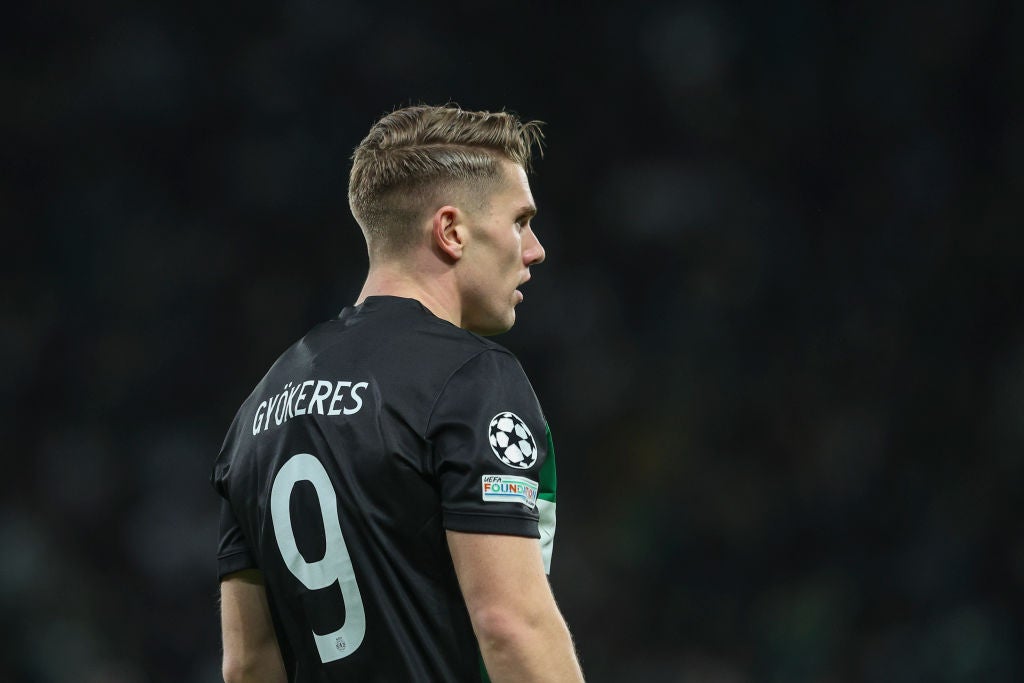Arsenal’s history could have been very different without Harry Woods. Without him, there may have been no Herbert Chapman, no trio of league titles in the 1930s, no status as London’s biggest club.
Arsenal narrowly avoided relegation in 1923-24. They only won 12 league games that season. Woods scored in six of them. He was Arsenal’s top scorer.
He also got a mere nine league goals. Which had a renewed pertinence more than a century later when Kai Havertz emulated him: for the first time in 101 years, Arsenal had no player in double figures for league goals.
Sporting CP did not have a similar problem. Viktor Gyokeres, who has been pushing for a move to the Emirates, hit 39 league goals at an average of one every 72 minutes. That was one more than Arsenal’s top five scorers – Havertz, Gabriel Martinelli, Leandro Trossard, Mikel Merino and Bukayo Saka – got between them.
A different club in a different league makes for an inexact comparison. Injuries to first Martin Odegaard and then Saka affected Arsenal’s supply line. But for three months on the sidelines, Havertz would probably have ended with around 14 league goals and more than 20 in all competitions.
And yet the numbers presented an irrefutable case for Arsenal to finally do what their fans had been urging them to: sign a striker. Mikel Arteta had accumulated an extraordinary array of left-backs, ventured into the goalkeeping market on an annual basis, and continually sought solidity from central midfielders. His model of sharing goals around the side had largely worked well in 2022-23, when Arsenal scored 88 times in the league, and 2023-24, when they struck 91 times, but not as their return dropped to 69 goals last season.
Enter Gyokeres. Expectations could be both simplistic and demanding. Make Arsenal score at the rate of Liverpool or Manchester City. Make Arsenal champions. So, no pressure there.
Comparisons could be drawn – and no doubt will be when they face City in September – with Erling Haaland, another out-and-out No 9 signed by a manager who had tended to favour false nines. Which, once again, could feel a steep ask given Gyokeres’s last taste of English football was to score 22 times in a season when Coventry reached the Championship play-offs.
He is a better player now, but one question is how his goal-a-game return in Portugal (68 in 66 in the Primeira Liga) translates to the Premier League; a tally of six in last season’s Champions League offers encouragement. Another is if Arteta can recalibrate his team to play to the strengths of a specialist goalscorer. A trademark Gyokeres strike often involved him running in behind the opposition defence. It isn’t really a typical Arsenal goal, though that reflects on the relative strengths of Havertz, Trossard and Gabriel Jesus.
If a criticism of Arteta’s Arsenal is that they can be too slow and structured, Gyokeres may prefer them to get the ball forward quicker. Certainly, he should add more of a threat on the counterattack, but if part of Arteta’s preference for forwards who could drop deep was to add an extra body in midfield, that – along with the arrival of Martin Zubimendi – should necessitate a shift.

Arsenal may expect an early return. Given the saga – albeit one stripped of drama in the long periods when absolutely nothing happened – of whether they would sign Gyokeres or Benjamin Sesko, there was always a fundamental difference between the Swede and the Slovenian. Gyokeres, now 27, is five years older.
He comes for a decent price, at £63.5m, but with far less resale value than the RB Leipzig forward. Arsenal’s eventual preference for Gyokeres may suggest a sense that Sesko has not kicked on. That Gyokeres failed to report for training at Sporting in a bid to force the move indicated his preference was for Arsenal.
If Havertz, by and large, did a fine job in attack, it will be instructive if he is reinvented as a midfielder or if he has a job-share in attack with Gyokeres. There may well be types of fixtures when Arteta prefers the German. Yet there are also sorts of games that explain the need for a specialist scorer. When Arteta’s model otherwise worked well in 2023-24, Arsenal drew a blank in five league games. That number remained the same last year, but there were 18 when they scored one or none; for Liverpool, the corresponding figure was just seven.

They were the occasions when they required the professional predator, the scrappy goal. It hasn’t really been their way. But then perhaps there has been a belated recognition that, as Arsenal came second, second and second, that another dimension is needed.
No Arsenal player has scored 20 Premier League goals in a season since Pierre-Emerick Aubameyang in 2019-20, which the Gunners ended with Arteta in charge, but started under Unai Emery. Indeed, in all competitions, only Saka, in 2023-24, has reached the 20 mark in a full campaign under Arteta.
Stay fit and Gyokeres ought to improve on that. Maybe moving to focus on one striker will come at a cost to the goal returns of others, but, in the 35 seasons since 1990, there are only six in which no Arsenal player has reached 18 goals in all competitions. Four of them were under Arteta. His methods have worked up to a point. Now Gyokeres is the face of a change in approach.
Read the full article here



